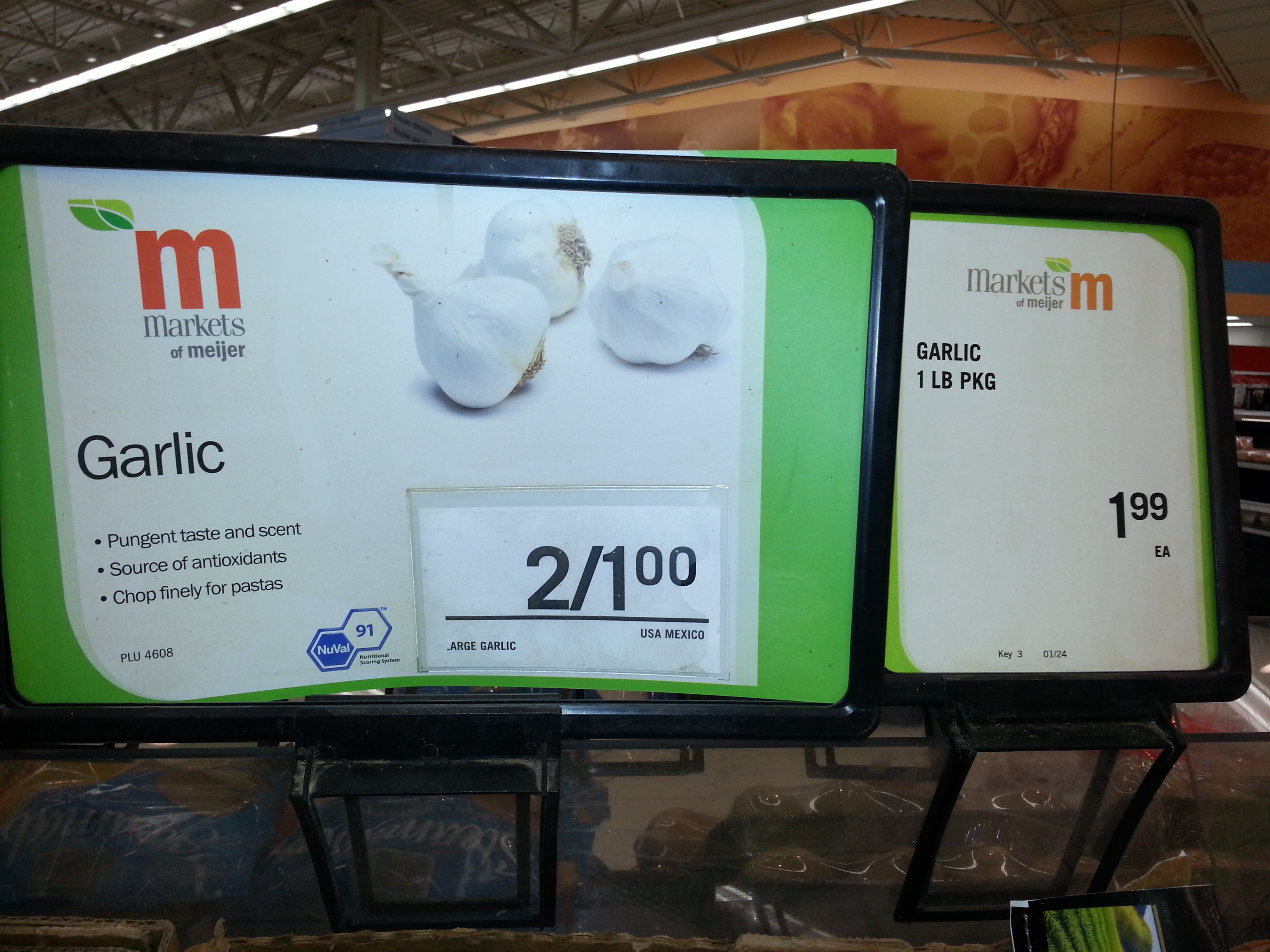1. Know your budget. I almost forgot to include this; but being aware of and sticking to a predetermined budget is the first step to maximizing your savings. Having even an approximate amount in mind will keep you from overspending unnecessarily.
2. Plan your meals based on sales. Most grocery stores put out a weekly ad – even the more popular produce stores, like Whole Foods or Mariano’s – and if you don’t get it in the mail, you can view it easily online. I usually base dinners around a protein, and buy the family size packs so I can either separate into 2 meals or make a Second Meal from the leftovers. The protein (fish, poultry, pork, beef, etc.) will usually be most expensive, so consider this first before looking at other specials. Then check out the produce sales. We shop at Meijer, and their store brand organic often goes on sale. This is how I decide what to buy that week. Same goes for their Meijer Naturals grocery products. If you can’t afford to buy everything organic, check out the Clean 15 & Dirty Dozen lists. If you’re only buying a few items organic, you might want to choose items on the Dirty Dozen list to reduce the chance of pesticides.
*Note: If you’re just starting out, it might take awhile to understand what a good sale price is. Don’t stress. Just do the best you can for now, and eventually it’ll be second nature to know when an item is overpriced, when it’s an average buy, and when it’s at a DEEP discount price.
3. Make a list and stick to it. Write down everything you plan to buy based on the ad. Double check your meal plan for the week, cross check your pantry, and add any missing ingredients to your list if necessary. If you’re on a really tight budget, estimate the cost of each item and get an approximate total, adjusting your list if necessary.
Then, when you get to the store, STICK TO YOUR LIST. I know the lure of the produce section… you suddenly get the urge to try a blood orange for the first time… or to buy an exotic root vegetable you’ve never used before. THIS. IS. BAD. Not only will it put you over your carefully constructed budget, but if you don’t have a recipe or specific use in mind for that item, chances are you will end up tossing it anyway, or wasting another item you bought. Reducing your waste (Read: the stuff you throw away because it’s gone bad) is a huge way to save money. If you were really deliberate about your list, you should have just enough produce to make it through each meal of each day for the week. Resist the urge to impulse buy; if you see something new you want to try, make a note of it, search recipes when you get home, and put it on the list for next week.
4. Check for coupons before you go. Part of the reason I love Meijer is because of their mPerks. Not only are there coupons for name brand products, but also for their store brand – which as I said, has great organic and natural products. So when I find a coupon that matches with a weekly sale, it’s a home run! or a 3 pointer! or a touchdown! (insert your favorite sport term here.) So check your favorite grocery store’s website for store coupons on generic items, including produce. Some stores have rewards programs; others have digital coupons you can load to a loyalty card. A little research goes a long way.
And if you are buying a specific brand name, check your local newspaper inserts. In our area, the best website for this is www.coupontom.com. It references an extensive catalog of all the current paper and printable coupons. When you search an item (by brand name or item name) it will pull up any coupons available and where to find them.
5. Enroll in rewards programs. As I said earlier, research if your favorite store(s) has a rewards program. A lot of stores have a point system connected to a loyalty card – and the points can then be converted to savings later. Some stores have a quantity requirement program (Buy 10, get the 11th free). Other stores give stickers based on your total spent within a qualifying time period, which can be returned at the end for products. Meijer has a great one they’ve recently instituted – you choose one reward in each of three categories. (For example, Spend $60 in produce, Get $5 off.) This is cumulative for the entire month. Once you reach the goal amount, you can ‘clip’ your reward to your mPerks account, and it is applied toward your total basket on your next trip. You can work towards 3 different rewards at a time, and if you finish a goal before the end of the month, you can choose another one. Again, check your favorite store’s website, or ask an associate next time you’re in store.
By investing a little time and research, buying healthier, natural, and organic food can be realistic for even the smallest budgets!


